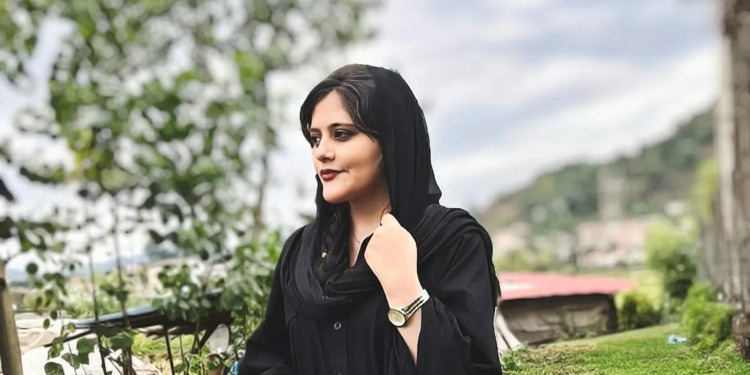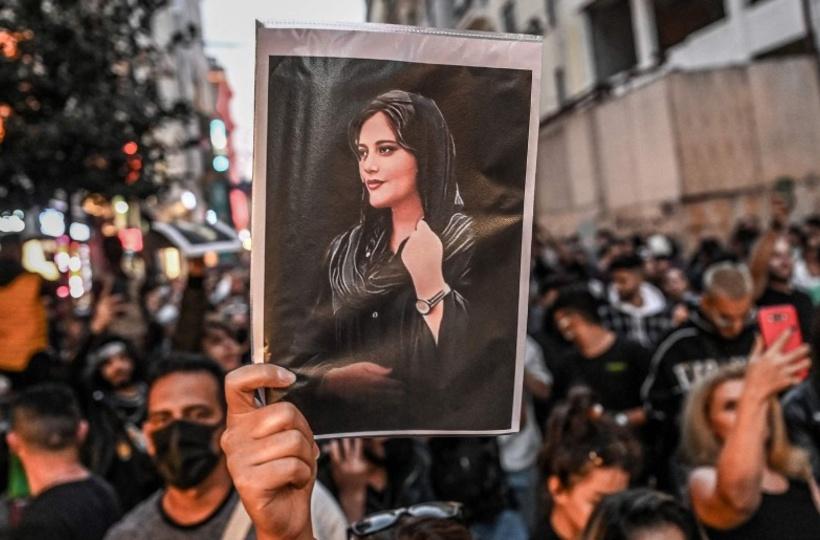A wave of protests engulfed Iran in the wake of the death of Kurdish Iranian woman, Mahsa Amini, 22, while in police custody. It had been more than forty days since the death of Mahsa after her arrest by the morality police for ‘improperly’ donning a headdress. In efforts to abort the protests which engulfed several cities in Iran, leaving behind a blood trail, Iran issued five death sentences against the perpetrators who threatened the stability of the country and restricted the use of the internet in some areas. Rights groups claimed that 200 people died since the death of Amini and hundreds were detained. People across the world joined the protests and called for easing of restrictions on women who were not allowed to appear in public without a head cover, oblivious of their nationalities and beliefs.
In efforts to curb the outcry, Iranian political hardliner Aly Larijani warned against the use of an iron fist against the protesters. The conservative politician called for easing up restrictions on the women of Iran, alerting colleagues that such a move was outdated and could backfire.
Women in Iran protested long before the 1979 revolution which brought Supreme Leader Ayatollah Khomeini to power. There were two most notable occasions when the women of Iran took to the streets. They rose against the Shah of Iran who assumed power in 1941. They also rose against the Iranian Revolution in 1979 several times, Iranian men joined the women’s protests, pitching in their own economic woes.

The moment Khomeini settled in as the ultimate ruler, the women realized they made a mistake in supporting the ousting of the Shah and ushering in the new regime. They took to revolt and even succeeded for a short time before their wishes to remove the veil was overturned. More rights were curtailed. Women were banned from access to political positions and from freedom to initiate divorce proceedings.
Ironically, the hijab was banned in Iran since 1936 in line with an edict issued by Shah Reza Pahlavi and permeated by his son, Mohamed Reza Pahlavi. The latter assumed power when his father was ousted by the British in 1941. The last Shah of Iran who had the support of the British and the United States had ruled until the 1979 revolution. He gave wider liberties to women such as voting, the right to divorce, to run for office and awarded women flexible inheritance laws. Under the Shah the women lived freely, traveled, studied and took up political and social positions. The women still felt they needed greater freedom and defied dictatorship. They demanded the rule of democracy. Their requests went far deeper than the hijab. It was about a life free from tyranny. When the 1979 revolutionary guards took over with the help of those same women, they at first rejoiced. They saw the revolution in line with Islamic rule that gave rights to women in the social, economic and political spheres. As soon as the Iranian revolution took hold, however, the women realized they miscalculated. The true interpretation of Islam was withheld and women’s rights were curtailed by the new regime.
There were earlier signs of dissent before the Mahsa incident. Sparks of unrest emerged when Iranian sport climber, Elnaz Rekabi, 33, who participated at the 2021 Climbing World Championship in South Korea was called out by the Iranian regime when her veil missed a beat and fell while she completed her climb, clinching a bronze medal. She was made to issue an apology, explaining that the Hijab fell by mistake during the strenuous challenge.
It was obvious after the sporting incident that international media had picked up a cause and a legitimate one to boot. Women from all over the world, including Australia, were joining the fray. One Iranian woman living in the southern continent claimed her family was threatened and that an active watchdog was on her heels demanding that she avoided participation in any protest. Iranian celebrity figures responded defiantly across swathes abroad. Iranian actress, Taraneh Alidoosti who featured in the Oscar-winning film The Salesman (2017) posted a photo of herself on Instagram without the veil. Others followed suit.

Women from all walks of life spoke out against the tragedy. It was obvious that the young woman, Amini, had no political or social agenda, nor was she interested in documenting life under an oppressive Iran. She was visiting the capital Tehran with family. It was a joyous ride. Some voices were quick to call out the incident as a precursor to another Arab Spring, or the collective economic mayhem in the Middle East. It was however a story about women’s needs for basic rights such as selecting their clothes within acceptable reach to their respective cultures. The Iranian morality authorities, after 43 years of revolutionary rule had failed to see the embarrassing pickle they exposed themselves to, where women in this day and age were still forced to wear a headdress ‘properly’. In a country where women were shamelessly treated in parallel to kindergarten children, to be told how to wear a headdress, the authorities were sending the wrong message. They were telling the world that still stood on the first human rung and had a long way to go before standing on equal footing with the rest of the world.
From a global perspective, it would be easy to claim that the veil issue was inspired by the Me Too movement ushered in during covid days, coupled with woke culture, gender freedom and the new black movement. But the women of Iran who revolted against the Shah and who ushered in the Iranian regime had much deeper issues than the veil. The women called for gender equality. They called for economic reform. They wanted unrestrained flexibility to lead a life of their choosing. The veil was not the issue but it certainly sparked identity and economic issues. According to a recent World Bank report, the Iranian economy was slowly moving out of the woods but was still bogged down by price distortions. Hope for better living conditions dictated that women’s position should not be undermined but must move in line with their country’s evolution. Women were a reckoning force and the government can no longer afford to sideline them. It was not surprising therefore that many women abroad called for more tightening of sanctions against the Iranian government until women were freed from the restrictions of the veil and other rights.
Paradoxically, the powerful, assertive women of Iran had welcomed at first the 1979 revolution which enforced the veil and ousted its predecessor, the Persian monarchy, which was instrumental in eliminating the hijab and the chador as early as 1936.
WE SAID THIS: Don’t Miss…Dead Body Found In The Undercarriage Of Plane From Iran



